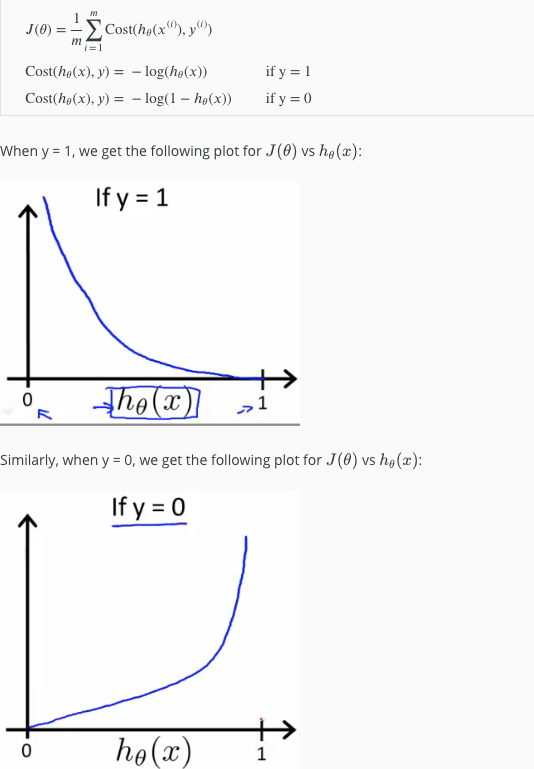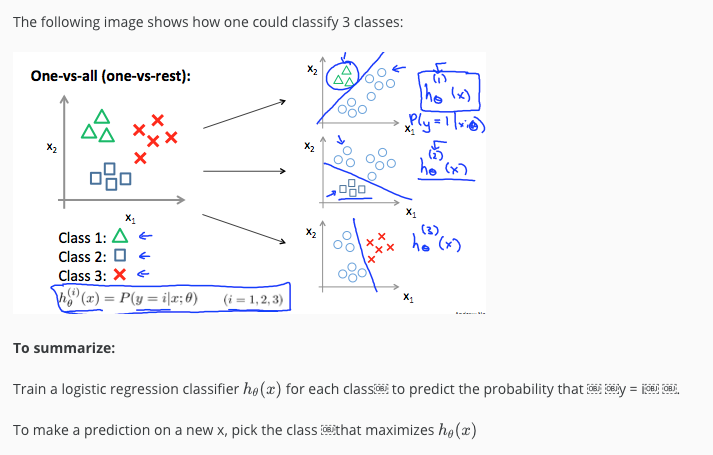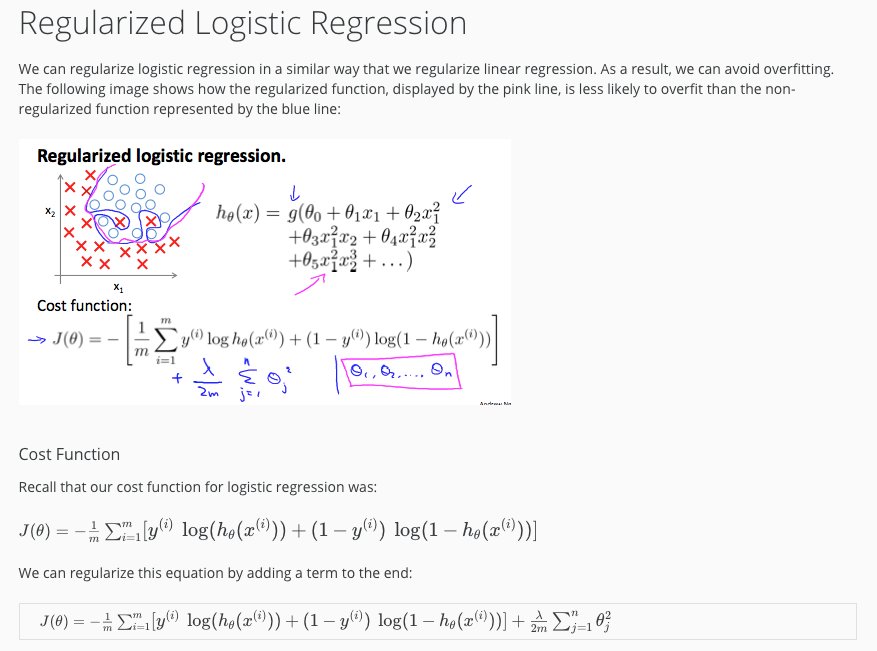Week 3 Machine Learning

Classification Algorithms
It is not a good idea to apply linear regression to classification problems.
Examples of classification problems.
- Predict if an email is spam or not.
- Predict if a transaction is fraud or not.
- Predict if a tumor is benign or not.
If possible answer is one of two, then it is a binary classification problem.
Logistic Regression
Hypothesis: hθ(x) = g(z)
- z = θTx
- g(z) = 1/(1+e-z)
- g is called sigmoid or logistic function which asymptotes at 0 and 1
- Hypothesis function h gives the probability that output is 1.
- So if hθ(x) = 0.7, it means that it is 70% chance that output is 1, and 30% chance that it is 0.
Decision boundary
- A way to convert the analog output function, to discrete.
- hθ(x) >= 0.5 -> y = 1
- hθ(x) < 0.5 -> y = 0
- g(z) >= 0.5 when z >= 0 when θTx >= 0
Cost function

Optimization Algorithms
- Gradient descent
- Conjugate gradient
- BFGS
- L-BFGS
Multi-class classification

Over and under fitting.
Under-fitting
- When a hypothesis function does not fit the training set well.
- Errors are quite high.
- Usually fixed by changing hypothesis function by including higher order polynomials or new features.
Over-fitting
- When a hypothesis function fits training set too well, but fails to predict future outcomes for yet unseen data.
- Happens when there are too many features or hypothesis contains too many higher order polynomials.
- While trying to reduce error rate as much as possible, it ends up creating a function which does not product any errors for training set, but is a overly restrictive predictive function.
- Fixed by regularizing.
- By introducing a very small error in every iteration for each parameter, θ, gives a set of parameter functions which fit the training set well, but also predict future outcomes well.
- Over fitting is possible for linera and logistic regression, regularization applies to both of them.
